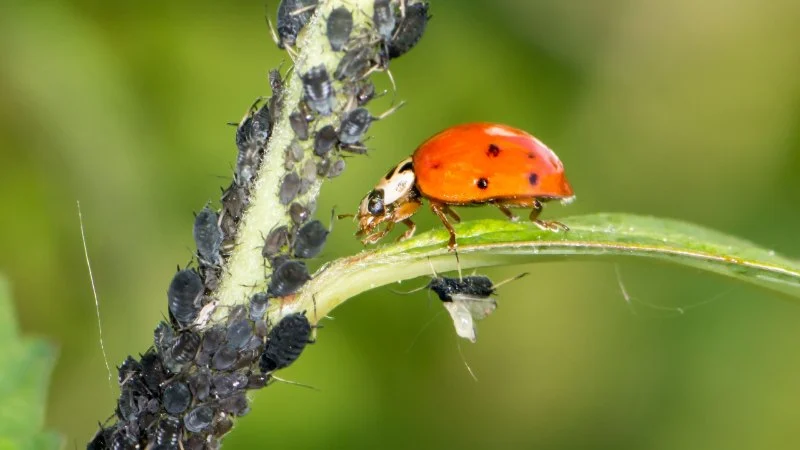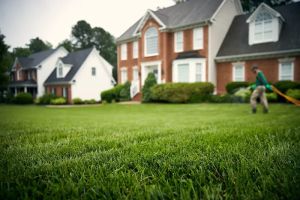
- 1. Biological Control Overview
- 2. Types of Biological Control Agents
- 3. Benefits of Using Biological Control at Home
- 4. How to Use Biological Control Agents Effectively
- 5. PestControlHub Recommendations
1. Biological Control Overview
Biological control, also known as biocontrol, is the use of natural organisms to manage pest populations in a way that’s environmentally friendly and sustainable. For home use, this can involve introducing specific predators, parasites, or pathogens that target and reduce harmful pests without relying on chemical pesticides. This method of pest control is gaining popularity among homeowners looking for safer, non-toxic ways to maintain a pest-free environment.
Whether you're dealing with ants, mosquitoes, or garden pests, biological control agents offer a natural solution that minimizes environmental impact and avoids the harmful effects of synthetic chemicals. Understanding how these agents work and how to incorporate them into your pest control strategy is key to effective home pest management.
2. Types of Biological Control Agents
There are three main types of biological control agents that can be used in home pest management:
2.1. Natural Predators
Natural predators are organisms that feed on pests. For example, ladybugs are commonly used to control aphids in gardens, while certain types of birds and frogs help reduce insect populations around the home. By encouraging these predators, you can create a balanced ecosystem in which pests are naturally controlled.
2.2. Parasites
Parasites are organisms that live in or on a pest and eventually kill it. A well-known example is the parasitic wasp, which targets specific pests such as caterpillars or aphids. These wasps lay their eggs inside the pests, and when the larvae hatch, they consume the pest from the inside out. This method is particularly effective for controlling agricultural pests and can be used in home gardens.
2.3. Pathogens
Pathogens, including bacteria, viruses, or fungi, can be used to infect and kill pests. One popular example is the use of Bacillus thuringiensis (Bt), a naturally occurring soil bacterium that targets specific insect larvae. This method is particularly effective for controlling pests like caterpillars and beetles without harming beneficial insects or plants.
3. Benefits of Using Biological Control at Home
Using biological control agents offers several significant benefits, particularly for homeowners looking for a sustainable and eco-friendly pest management solution. Here are the primary advantages:
3.1. Environmentally Friendly
Biological control agents provide a more sustainable alternative to chemical pesticides. They target only specific pests and don’t harm other wildlife, plants, or the environment. By reducing your reliance on synthetic chemicals, you’re contributing to a healthier ecosystem.
3.2. Long-Term Pest Management
Once established, biological control agents can provide long-term pest management. For example, natural predators like ladybugs can continue to control aphid populations over time without additional intervention. This creates a more balanced, self-sustaining environment in your home or garden.
3.3. Safe for Humans and Pets
Biological control methods are safe for humans and pets, unlike chemical pesticides, which can pose health risks. Using biological agents eliminates the need for harmful chemicals, making it a safer option for families and pets.
3.4. Cost-Effective
While there may be an initial investment in biological control agents, they can be cost-effective in the long run. Once established, they continue to manage pest populations without requiring ongoing purchases of pesticides or additional treatments.
4. How to Use Biological Control Agents Effectively
To effectively use biological control agents in your home, follow these key steps:
4.1. Identify the Pest
Before you can choose the right biological control agent, you need to identify the pest you're dealing with. Different pests require different control methods. For example, aphids can be controlled by introducing ladybugs, while caterpillars may require Bacillus thuringiensis. Proper identification is essential for selecting the most effective agent.
4.2. Select the Right Biological Control Agent
Once you've identified the pest, choose the appropriate biological control agent. You can find several products and species designed for home use, from beneficial insects like predatory mites to microbial products like Bt. Make sure to choose a product that targets your specific pest problem and is safe for your home environment.
4.3. Release or Apply the Agent Correctly
When introducing predators or applying microbial products, timing is crucial. For example, releasing ladybugs in the evening or early morning when they’re most active will increase their effectiveness. If you're using a microbial agent, follow the manufacturer's instructions for application, as overuse can lead to reduced effectiveness.
4.4. Monitor the Results
After introducing a biological control agent, monitor the pest population over time. It may take a few weeks for the agents to have a noticeable effect, so be patient. Regularly check for signs of pest activity and adjust your approach if necessary, such as adding more beneficial insects or reapplying microbial agents.
5. PestControlHub Recommendations
If you're looking for the best biological control products for your home, visit PestControlHub for expert recommendations. We offer a wide range of natural pest control solutions, including beneficial insects, microbial agents, and other sustainable options that are safe for your family and pets. Our products are carefully selected to help you maintain a pest-free home with minimal environmental impact.









 Wildlife Resolutions4.0 (443 reviews)
Wildlife Resolutions4.0 (443 reviews) Pest Marshals of Toledo5.0 (2 reviews)
Pest Marshals of Toledo5.0 (2 reviews) LS Rodent Proofing & Pest Control Service5.0 (4 reviews)
LS Rodent Proofing & Pest Control Service5.0 (4 reviews) Best Termite & Pest Control4.0 (16 reviews)
Best Termite & Pest Control4.0 (16 reviews) Varment Guard Wildlife Services5.0 (28 reviews)
Varment Guard Wildlife Services5.0 (28 reviews) Pestban Inc4.0 (394 reviews)
Pestban Inc4.0 (394 reviews) How to Use Monitors to Detect Pest Entry: A Comprehensive Guide
How to Use Monitors to Detect Pest Entry: A Comprehensive Guide How to Predict Which Pests Will Invade Next – Smart Pest Forecasting for the U.S.
How to Predict Which Pests Will Invade Next – Smart Pest Forecasting for the U.S. How to Conduct a Pest Risk Assessment at Home – Expert Guide
How to Conduct a Pest Risk Assessment at Home – Expert Guide How to Block Pest Entry Around Deck Joists: Effective Solutions
How to Block Pest Entry Around Deck Joists: Effective Solutions How to Safely Use Fumigation Methods: A Comprehensive Guide for Homeowners
How to Safely Use Fumigation Methods: A Comprehensive Guide for Homeowners Why Pests Are More Active After Rain: Understanding the Link Between Weather and Pest Behavior
Why Pests Are More Active After Rain: Understanding the Link Between Weather and Pest Behavior